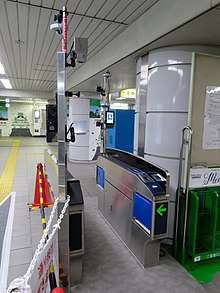Facial recognition systems, computerized applications designed to automatically recognize or authenticate an individual’s identity via their facial features, have been evolving since the 1960s. The process involves comparing distinct facial attributes from a digital photo or video with those stored in a database. Its extensive use spans across areas such as law enforcement, video monitoring, passenger checks, and human-computer interactions. Despite its utility, the technology has attracted criticism due to privacy infringement, misidentification, and potential misuse like deepfakes. The technology is persistently advancing, with the introduction of 3D sensors and novel detection methods enhancing its precision. Even amidst disputes, facial recognition systems are being implemented globally, with different degrees of legal and regulatory oversight.
Este artículo factual accuracy may be compromised due to out-of-date information. (June 2022) |
A facial recognition system is a technology potentially capable of matching a human face from a digital image o un video frame against a base de datos of faces. Such a system is typically employed to authenticate users through ID verification services, and works by pinpointing and measuring facial features from a given image.


Development began on similar systems in the 1960s, beginning as a form of computer aplicación. Since their inception, facial recognition systems have seen wider uses in recent times on smartphones and in other forms of technology, such as robótica. Because computerized facial recognition involves the measurement of a human's physiological characteristics, facial recognition systems are categorized as biometrics. Although the accuracy of facial recognition systems as a biometric technology is lower than iris recognition, fingerprint image acquisition, palm recognition or voice recognition, it is widely adopted due to its contactless process. Facial recognition systems have been deployed in advanced human–computer interaction, video surveillance, law enforcement, passenger screening, decisions on employment and housing and automatic indexing of images.
Facial recognition systems are employed throughout the world today by governments and private companies. Their effectiveness varies, and some systems have previously been scrapped because of their ineffectiveness. The use of facial recognition systems has also raised controversy, with claims that the systems violate citizens' privacy, commonly make incorrect identifications, encourage gender norms y racial profiling, and do not protect important biometric data. The appearance of medios sintéticos como deepfakes has also raised concerns about its security. These claims have led to the ban of facial recognition systems in several cities in the Estados Unidos. Growing societal concerns led social networking company Metaplataformas to shut down its Facebook facial recognition system in 2021, deleting the face scan data of more than one billion users. The change represented one of the largest shifts in facial recognition usage in the technology's history. IBM also stopped offering facial recognition technology due to similar concerns.